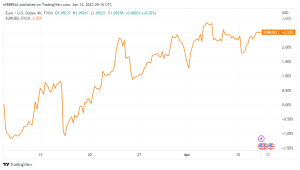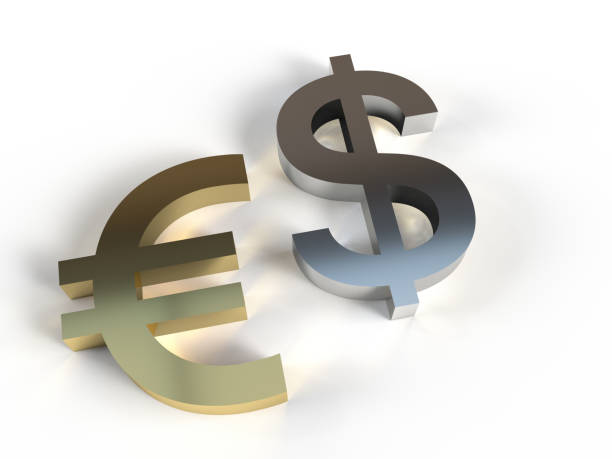EURUSD has lost its recovery momentum and begun to move sideways slightly above 1.0900 early Wednesday. The market reaction to US March inflation data could provide the pair with the next directional cue.
March US inflation data could have a significant impact on the USD’s valuation.
Following the rebound seen in the aftermath of the March jobs report. The US Dollar Index staged a downward correction on Tuesday. The cautious market mood, on the other hand, helped the US Dollar (USD) limit its losses in the second half of the day and limited the EURUSD.
The Consumer Price Index (CPI) is expected to fall to 5.2% from 6% in February in March. The annual Core CPI is expected to rise, excluding volatile food and energy prices. to 5.6%, with a 0.3% monthly increase compared to 0.4% in February.
The monthly core CPI print is likely to elicit a reaction from investors. Markets are likely to continue pricing in a 25-basis point (bps) Federal Reserve (Fed) rate hike in May if this data comes in at 0.5% or higher. The probability of such a decision is 67% according to the CME Group Fed Watch Tool. Indicating that the USD has room to strengthen further.
A soft-Core CPI with a monthly increase of 0.2% or less, on the other hand, should cause investors to reconsider the Fed’s rate outlook. In that case, the USD is likely to face renewed selling pressure, allowing the EURUSD to gain bullish momentum.
During the late American session, the minutes of the Fed’s March policy meeting will also be released. However, because that meeting occurred prior to the release of March inflation and labor market data. The publication is unlikely to cause a significant reaction.
EURUSD Technical Analysis
On the four-hour chart, EURUSD rose above the 20-period and 50-period Simple Moving Averages (SMA) and closed the last four four-hour candles above them.
Furthermore, the pair has returned to the ascending regression channel. And the Relative Strength Index (RSI) has risen above 50, indicating a lack of seller interest.

If the pair falls below 1.0920 (the lower limit of the ascending channel), the pair will find immediate support at 1.0900. (20-period SMA, 50-period SMA). With a four-hour close below the latter. Further losses could be seen towards 1.0860 (Fibonacci 23.6% retracement of the latest uptrend, 100-period SMA).
If 1.0920 holds, EURUSD will likely encounter resistance at 1.0960 (static level) before aiming for 1.1000 (psychological level, static level) and 1.1040. (Upper limit of the ascending channel).









